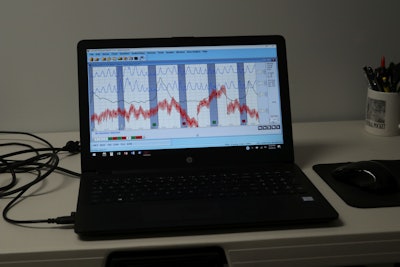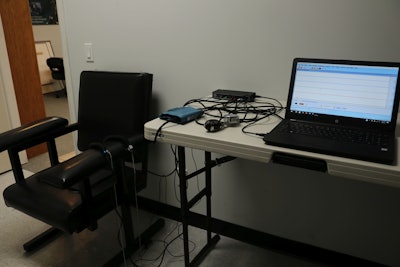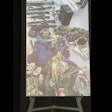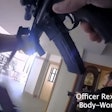 The "polygraph machine does not detect lies." That responsibility falls to the qualified polygraph examiner, not a machine or instrument.Photo: Vollmer Institute
The "polygraph machine does not detect lies." That responsibility falls to the qualified polygraph examiner, not a machine or instrument.Photo: Vollmer Institute
"Science and technology revolutionize our lives, but memory, tradition and myth frame our response."
—Arthur M. Schlesinger
Science has contributed immensely to the solving of crimes and the processing of evidence. When a polygraph is used as an investigative tool—whether it be for obtaining corroboration, eliminating or validating a person involved in a crime as a witness or suspect, or for conducting a background investigation—the accuracy of the results depends on the training and education and experience of the examiner and the systems and the processes utilized to conduct the interview.
For the law enforcement investigator, it is important that the use of the polygraph be viewed within the context of its overall value to the investigative process. Here are 10 things to consider when contemplating the use of a polygraph in a criminal investigation.
1. Two Test Techniques
Criminal and administrative law enforcement polygraph exams primarily involve two test techniques and formats: validity examinations and utility examinations. Each has its own strengths and weaknesses. Investigators can derive the most benefit from a polygraph examination if they fully understand the differences.
2. Validity Examinations
Validity examinations are examinations in which the written and stated purpose agreed to by the parties involved is to provide a diagnostic opinion as evidence in a pending judicial proceeding. The strengths of these exams are high validity and reliability, and their primary weakness is that collateral issues are not addressed.
Here's an example. Antonio Langella is in custody for the murder of Manuel Panza. Panza was found dead in his home. The coroner has determined cause of death was a single gunshot wound to the head. Langella, 35, has been employed by his Uncle Nick for the past 20 years as an "independent contractor." He denies shooting Panza and has retained the services of attorney Michael Johnson who is asking for a polygraph interview.
3. Utility Examinations
Utility examinations are polygraph exams in which all relevant questions address two or more areas of the same frame of reference but are partially or completely independent from one another. The strength of this technique is that collateral issues are addressed. The weakness is that the results are less reliable.
Here's an example. Paul Phillips is an executive with an accounting firm. One week ago today Phillips arrived for work at 8:30 a.m. He parked his white BMW in the parking lot in front of his office. When he left the building at 11:30 for lunch, his car was not in the lot. He has reported the theft to the police. Phillips holds clear title to the car.
The suspect in this auto theft is Maxwell Smart, 20. He is employed as a sales clerk with Parts-Are-Us, a retail outlet for automotive parts and equipment. On the basis of information provided by a confidential informant, Smart has been interviewed by police investigators. He has denied stealing the white BMW and is willing to take a polygraph interview. He has not been arrested and is not in custody.
Relevant questions for this exam include: "Have you ever been in that white BMW?" "Have you ever driven that white BMW?" "Do you know for sure who stole that white BMW?"
4. It's Not a Machine
The device employed in any polygraph interview is not a machine; it's an instrument. Machines do work; instruments record events.
 Criminal and administrative law enforcement polygraph exams primarily involve two test techniques and formats: validity examinations and utility examinations.Photo: Vollmer Institute
Criminal and administrative law enforcement polygraph exams primarily involve two test techniques and formats: validity examinations and utility examinations.Photo: Vollmer Institute
5. Controlled Stimuli
Instruments used in polygraph interviews record human psychophysiology responding to carefully controlled stimuli such as carefully constructed test questions. These recordings are evaluated by an examiner who, by virtue of his or her training, education, and experience, is qualified to form an opinion.
6. Not a Lie Detector
The "polygraph machine does not detect lies." That responsibility falls to the qualified polygraph examiner, not a machine or instrument.
7. Preventing Mistakes
More than 20 years of published polygraph research has established the parameters a qualified examiner must use in the evaluation of data produced by the psychophysiology of an examinee responding to carefully constructed test questions. This research carefully considers the consequences of false-negative (he did not do it when in fact he did do it) and false positive (she did it when in fact she did not do it) examiner opinion.
8. Examiner Opinion
More than 20 years of published polygraph research supports the contention that the opinion of a qualified examiner will be the correct opinion at least 90 times out of 100 calls. No science is 100% accurate. The polygraph examiner profession makes no such claim.
9. When to Use It
Polygraph interviews are tools in the tool bag of law enforcement. Try to drive a screw into a wall with a hammer and the most likely result is a sore thumb. Try to drive a nail into a wall with a screwdriver and the most likely result is a bruised or cut hand. Attempting to drive a polygraph interview to the wrong set of circumstances will most likely result in a false-negative or false positive qualified examiner opinion.
10. Pretesting is Critical
A properly conducted pre-test interview by a qualified examiner using validated polygraph techniques and formats will most likely result in a valid and reliable examiner statement of probability based upon published research.
Finally, it is important to remember that the polygraph test is not intended to measure or detect deception or truth-telling per se. The polygraph test is merely a tool for the discrimination of deception and truth-telling. Neither the polygraph test nor any scientific test is expected to be infallible.
Michael B. Lynch, MA is the school director for the Vollmer Polygraph training and education program. For additional information please go to vollmerinstitute.com or call (800) 295-6041.
J.C. De Ladurantey is the managing partner of the Vollmer Institute, a polygraph and forensic science academy located in Yorba Linda, CA. He has over 40 years of law enforcement experience.












